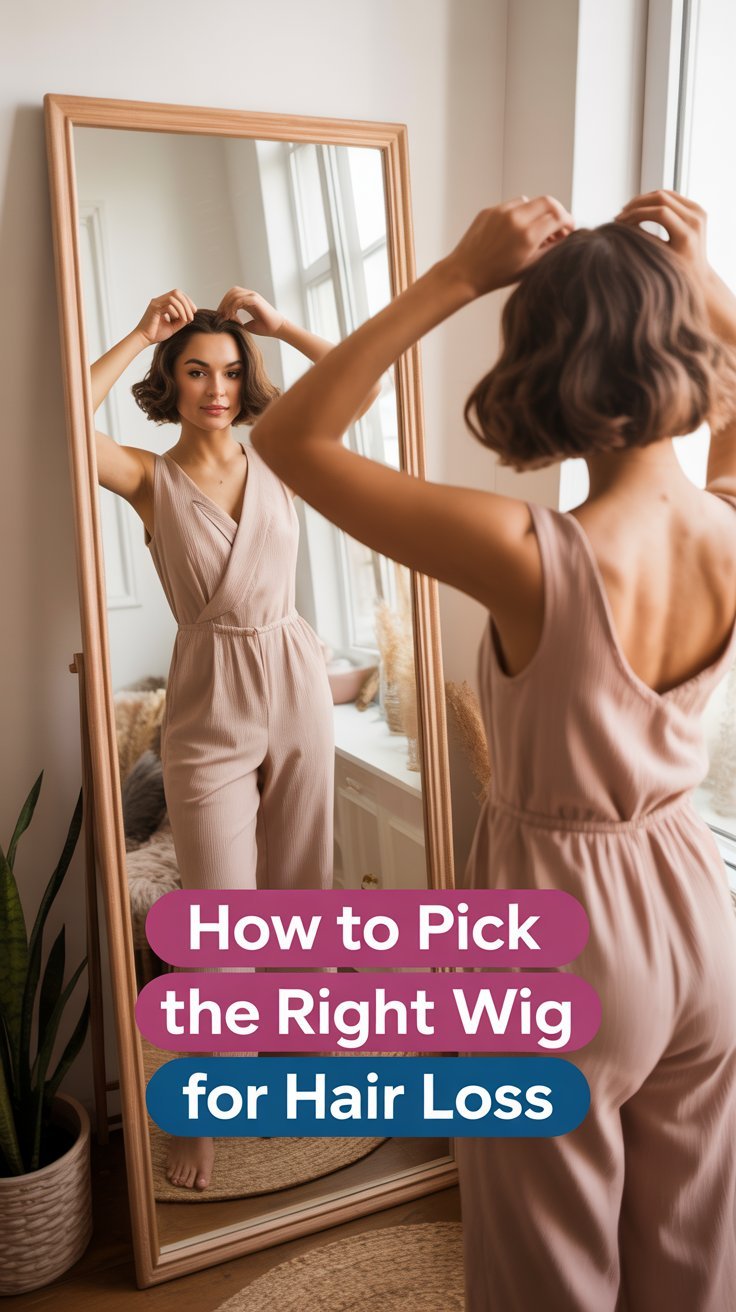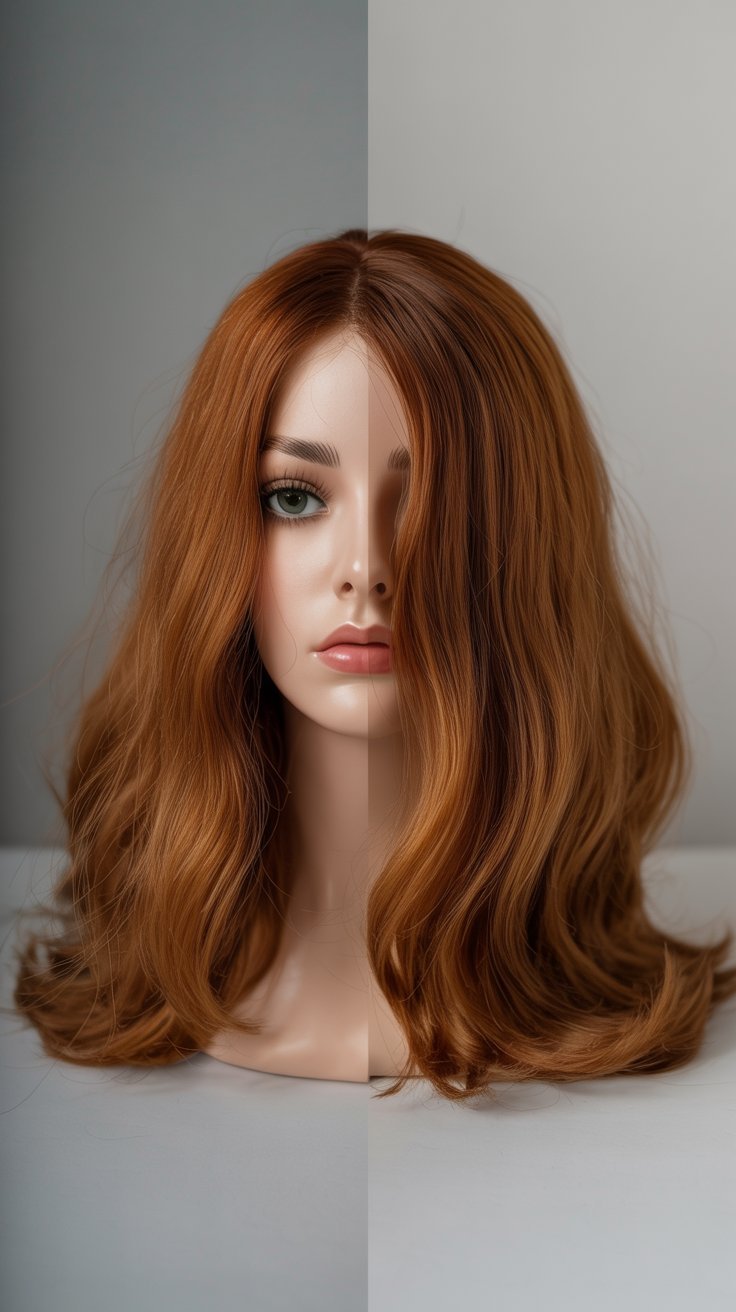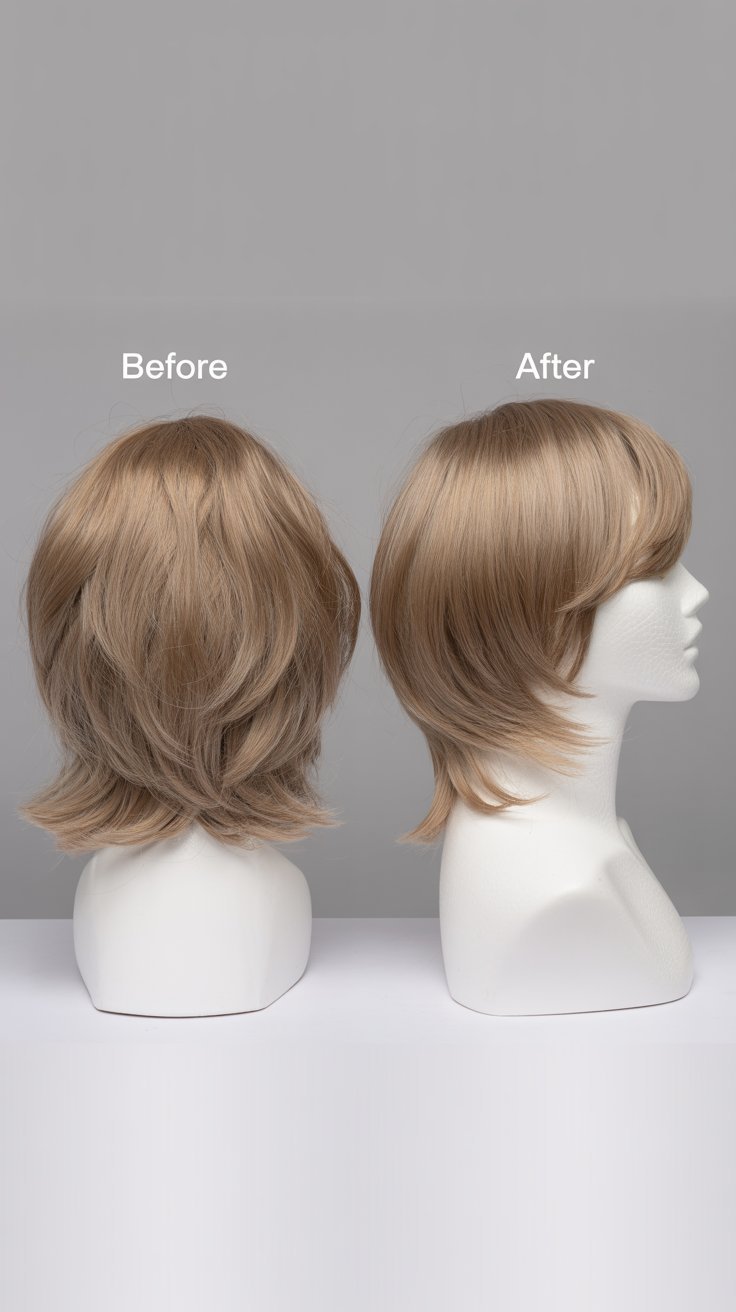Hair loss sucks. There’s no sugar-coating it. Whether you’re dealing with alopecia, chemo treatments, or just thinning hair that makes you feel less confident, finding the right wig for hair loss can feel overwhelming. I’ve been there, staring at hundreds of options online, wondering which one will actually make me feel like myself again.

The good news? Picking the right wig for hair loss doesn’t have to be rocket science. After helping countless friends through their hair loss journeys and trying way too many wigs myself, I’ve figured out exactly what works. Let’s get you sorted with a wig that fits your life, budget, and most importantly, makes you feel amazing.
Understanding Your Hair Loss Type
Temporary vs Permanent Hair Loss
First things first – how to pick the right wig for hair loss starts with understanding what type of hair loss you’re dealing with. Temporary hair loss from chemo or stress might need different solutions than permanent conditions like alopecia areata.
For temporary hair loss, you might want lighter, more breathable options since your scalp could be extra sensitive. Cotton wig caps work wonders here. For permanent hair loss, you can invest in higher-quality pieces that’ll last longer since you’ll be depending on them more.
Complete vs Partial Hair Loss
Complete hair loss means you get a blank canvas to work with. Any wig style will look natural on you. Partial hair loss gets trickier – you need to match your existing hair color and texture perfectly.
If you still have some hair, consider clip-in pieces or partial wigs that blend with what you’ve got. Don’t try to force a full wig over patchy hair – it never looks right and feels uncomfortable too.
How to Pick the Right Wig for Hair Loss
The Best Wig Types For Hair Loss
Human Hair Wigs

Human hair wigs for hair loss offer the most natural look and feel. They move like real hair, take heat styling, and last longer with proper care. The downside? They’re pricier and need more maintenance.
I recommend 100% virgin human hair if your budget allows. Remy hair works great too – the cuticles stay aligned so there’s less tangling. For hair loss situations, this investment makes sense since you’ll wear it daily.
High-Quality Synthetic Wigs

Modern synthetic wigs have come so far! Heat-friendly synthetic fiber looks incredibly natural and costs way less than human hair. For picking the right wig for hair loss, synthetic can be perfect if you want low maintenance.
The best synthetic wigs use heat-defiant fiber that handles styling tools up to 350°F. They hold their style longer than human hair and work great in humid weather. Perfect for active lifestyles or if you’re new to wearing wigs.
Cap Construction That Works
Monofilament Tops
Monofilament wigs for hair loss create the most realistic scalp appearance. The mono top allows each hair to move independently, just like hair growing from your scalp. This matters when you have little to no natural hair showing through.
The breathable mono material feels comfortable against sensitive scalps. You can part the hair anywhere across the crown area. For complete hair loss, mono tops are game-changers – nobody will guess you’re wearing a wig.
Image prompt: Detailed close-up of monofilament wig cap construction showing individual hair strands tied to mesh, realistic scalp appearance through the material, professional lighting highlighting the technology
Lace Front Construction
Lace front wigs give you that perfect hairline that looks like hair is growing naturally. The ultra-thin lace sits against your forehead and becomes invisible when applied correctly. This is huge for hair loss wig selection because the hairline often gives wigs away.
Hand-tied lace fronts cost more but look incredibly natural. Machine-made lace fronts work well too and cost less. Either way, you get styling flexibility and a natural look that boosts confidence.
Image prompt: Before and after comparison of lace front wig application, showing the transformation from obvious wig line to natural-looking hairline, soft natural lighting, realistic portrait photography
Comfortable Cap Features
Look for adjustable straps, velcro closures, and ear tabs. These features help you get a secure, comfortable fit. Bamboo or cotton cap linings feel softer against sensitive skin than basic polyester.
Wigs with built-in comfort strips around the perimeter prevent slipping and reduce pressure points. Trust me, comfort matters when you’re wearing a wig every day for hair loss coverage.
Choosing The Right Color
Matching Your Natural Tone

If you still have some hair, matching your natural color exactly is super important for selecting the right wig for hair loss. Take photos of your hair in different lighting – indoor, outdoor, fluorescent. Hair color looks different everywhere!
Order color rings from wig companies to see shades in person. Most online retailers offer them free or cheap. Don’t guess on color – it’s the fastest way to end up with a wig that looks obviously fake.
Considering Your Skin Tone
Your wig color should complement your skin tone, not fight it. Warm skin tones look great with golden browns, auburns, and warm blacks. Cool skin tones shine with ash browns, platinum blondes, and cool blacks.
When dealing with hair loss, you might want to try colors you never could before! This could be your chance to go blonde or try that red you always wanted. Have some fun with it – you deserve to feel beautiful.
Image prompt: Professional portrait collage showing same person wearing different colored wigs that complement their skin tone, soft studio lighting, showing how color choice affects overall appearance
Getting The Perfect Fit
Measuring Your Head
How to pick the right wig for hair loss includes getting accurate measurements. You need circumference, ear to ear across the top, and front hairline to nape measurement. Use a soft measuring tape and don’t pull tight.
Most wigs come in average, petite, or large sizes. Average fits most people (21.5-22.5 inches circumference). If you’re between sizes, go smaller – you can always stretch a wig but can’t shrink one.
Image prompt: Step-by-step visual guide showing proper head measurement technique with measuring tape, clear illustrations of the three key measurements needed for wig fitting, professional styling environment
Trying Before Buying
Many wig stores offer try-on appointments. This helps so much with selecting the right wig for hair loss because you can see how different styles look on your face shape. Some online retailers have generous return policies too.
If you can’t try on first, order from companies with good return policies. Keep tags on and don’t cut the wig until you’re sure it works. Most places give you 30 days to decide.
Special Considerations For Medical Hair Loss
Sensitive Scalp Solutions
Chemo and other treatments can make your scalp super sensitive. Look for wigs with soft, natural fiber linings. Bamboo fiber caps feel amazing and have antimicrobial properties. Cotton linings work well too.
Skip wigs with rough or scratchy interiors. Your comfort comes first. Some companies make specific medical wigs designed for sensitive scalps – they cost more but might be worth it for daily comfort.
Insurance And Medical Deductions
Many insurance plans cover wigs for medical hair loss. You need a prescription from your doctor calling it a “cranial prosthesis.” Keep all receipts – even if insurance doesn’t cover it, wigs for medical hair loss are tax deductible.
Some wig shops work directly with insurance companies. Ask about this when shopping. It can save you the hassle of filing claims yourself.
Styling Your New Wig
Professional Styling vs DIY

For your first wig for hair loss, consider professional styling. A good wig stylist can customize the cut, thin out thick areas, and make it look like it grew from your head. This usually costs $50-150 but makes a huge difference.
If you’re comfortable with scissors, you can do basic trimming yourself. Start conservatively – you can always cut more but can’t add hair back! Watch YouTube tutorials specific to your wig type first.
Heat Styling Guidelines
Human hair wigs handle heat just like your real hair did. Use heat protectant and moderate temperatures. Synthetic wigs vary – heat-friendly ones handle up to 350°F, regular synthetic wigs melt with heat.
When in doubt, test a small hidden section first. Better to ruin a tiny piece than the whole wig! Steam styling works great for both human hair and synthetic wigs without the damage risk.
Budget-Friendly Options
Starting With Synthetic
Don’t feel bad about starting with synthetic wigs! Modern ones look amazing and cost a fraction of human hair. This lets you try different styles and colors without huge investment while dealing with hair loss.
Good synthetic wigs run $50-200. Human hair starts around $200 and goes up from there. Start synthetic, learn what you like, then invest in human hair if you want to upgrade later.
Shopping Smart
End-of-season sales offer great deals on wigs. Many companies have clearance sections with perfectly good wigs in less popular colors. Wig outlets and warehouse sales can save you hundreds.
Join wig groups on social media for sale notifications and coupon codes. Other people dealing with hair loss share the best deals they find. We’re all in this together!
Maintenance And Care
Daily Care Routine
Caring for wigs during hair loss means gentle handling. Brush from ends up using a wide-tooth comb or wig brush. Store on a wig stand to maintain shape. Cover with a silk scarf if you have pets – cat hair on wigs is the worst!
Wash every 7-10 wears unless you sweat a lot or use products. Over-washing shortens wig life. Use wig-specific shampoos – they’re gentler than regular hair products.
When To Replace
Synthetic wigs typically last 4-6 months with daily wear. Human hair wigs can last a year or more with good care. Signs it’s time to replace include excessive tangling, dullness, or losing shape.
Don’t wait until your wig looks terrible to replace it. Having a backup wig reduces stress and keeps you looking your best while dealing with hair loss.
Building Confidence With Your Choice
The Adjustment Period

Getting used to wearing wigs takes time. You might feel self-conscious at first – that’s totally normal! Most people don’t notice wigs as much as you think they do. Picking the right wig for hair loss is just the first step in feeling confident again.
Practice styling at home before going out. Get comfortable with how the wig moves and feels. The more natural it feels to you, the more confident you’ll appear to others.
Finding Your Style
Hair loss can be a chance to try styles you never could before! Always wanted a pixie cut? Go for it! Curious about bangs? Now’s your time! Don’t just replace what you lost – explore new looks that make you excited.
Take photos of styles you love and bring them to wig shops. Most wig consultants love helping people find their perfect look. This should be fun, not stressful.
Your hair loss doesn’t define you, but the right wig for hair loss can help you feel like yourself again. Take your time choosing, invest in quality where it matters, and remember that confidence is your best accessory. You’ve got this, and you’re going to look amazing! 🙂


